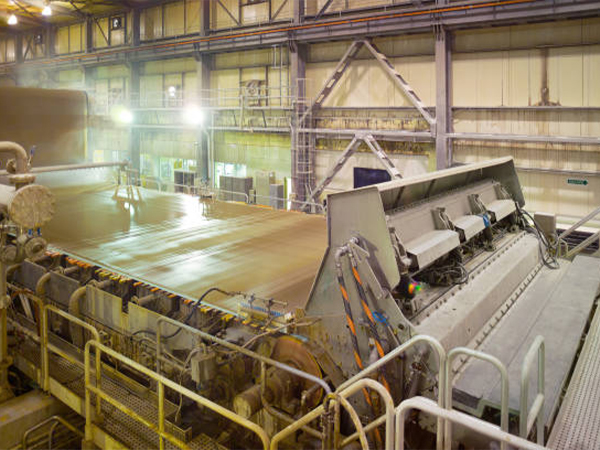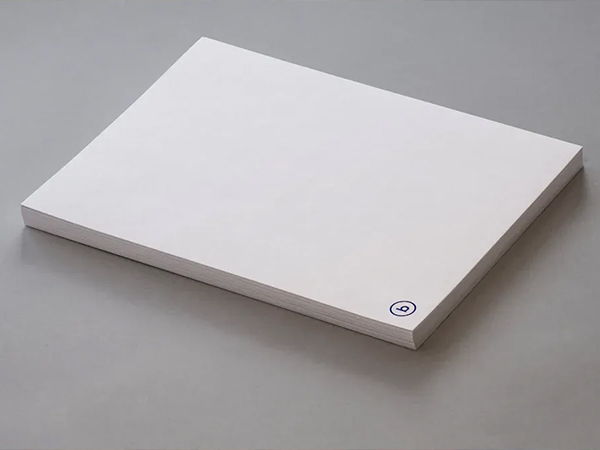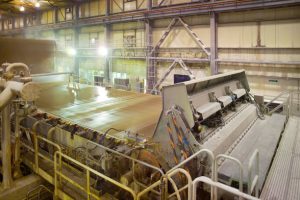
You rely on clean systems to produce high-quality paper. Biocides for Papermaking play a vital role by controlling microbial contamination and preventing unpleasant odors. When you use the right biocides, you protect your process from slime formation, reduce unplanned downtime, and maintain the durability of your products. The following table highlights how biocides impact both product quality and operational efficiency:
| Aspect | Benefit |
|---|---|
| Product Quality | Prevents microbial contamination, improving quality and durability of paper products |
| Operational Efficiency | Reduces machine downtime and maintenance costs by preventing slime formation |
Selecting the correct biocide and applying it properly ensures you achieve consistent results and efficient operations.
Key Takeaways
- Clean systems are essential for high-quality paper. Regular cleaning prevents microbial contamination, ensuring consistent product quality.
- Using the right biocides reduces machine downtime and maintenance costs. This investment protects your equipment and boosts operational efficiency.
- Select biocides based on your specific needs. Consider factors like effectiveness, environmental impact, and safety to make informed choices.
- Monitor biocide performance regularly. Advanced technologies can help track microbial activity and optimize treatment, ensuring clean systems.
- Prioritize worker safety and environmental compliance. Proper handling and eco-friendly biocides protect both your team and the environment.
Importance of Clean Systems
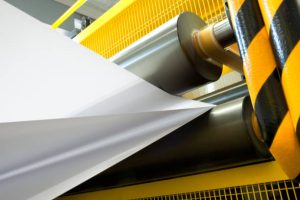
Product Quality
You set high standards for your paper products. Clean systems help you meet those standards every day. When you keep your papermaking equipment free from microbial contamination, you prevent defects like spots, holes, and discoloration. These issues can ruin the appearance and strength of your paper. Customers expect consistency, and you deliver it by maintaining a clean process.
Save-all systems play a key role in this effort. They reclaim fine particles that would otherwise end up in wastewater. By returning these valuable additives to your production cycle, you reduce waste and improve the yield of your process. This approach not only boosts product quality but also supports sustainability goals. You see fewer rejects and less rework, which means your finished paper meets the highest quality standards.
Tip: Regular cleaning and monitoring help you catch problems early, so you can maintain top-quality output.
Production Issues
Dirty systems create headaches for your operation. Microbial growth leads to slime deposits, which can clog pipes, screens, and felts. These blockages slow down your machines and force you to stop production for cleaning. Every minute of downtime costs you money and disrupts your schedule.
You also face higher maintenance costs when you let contamination build up. Pumps and valves wear out faster, and you need to replace parts more often. By keeping your systems clean, you extend the life of your equipment and reduce the risk of unexpected breakdowns.
- Clean systems help you:
- Minimize unplanned downtime
- Lower maintenance expenses
- Maintain steady production rates
When you invest in cleanliness, you protect both your product and your bottom line.
Microbial Growth Challenges
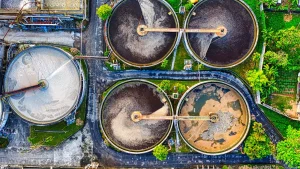
Common Microbes
You face a constant battle against a wide range of microbes in your papermaking systems. These organisms thrive in the warm, moist environments found throughout the process. Some species dominate due to their ability to form biofilms and survive harsh conditions. The table below highlights the most frequently identified genera and species in contaminated paper mills:
| Genera | Species Identified in Paper Mills |
|---|---|
| Bacillus | Found in various paper mills across the USA, Finland, New Zealand, and Canada |
| Paenibacillus | Isolated in the study, not previously reported |
| Xanthomonas | Found in multiple locations, confirming previous studies |
| Raoultella | Newly isolated species in this study |
| Serratia | Newly isolated species in this study |
| Klebsiella | Newly isolated species in this study |
These microbes can quickly multiply and adapt, making them difficult to control without the right strategies. You need to recognize their presence early to prevent major issues.
Odor and Deposits
Microbial growth leads to more than just visible contamination. You often notice unpleasant odors and stubborn deposits that disrupt your operations. Bacterial growth and biofilm formation result in slime production, which causes odors, discoloration, and irregularities in paper formation. This slime not only affects the appearance of your paper but also reduces its quality.
You may encounter several types of odors and deposits linked to microbial activity:
- Rotten egg smells from anaerobic sulfate-reducing bacteria
- Rancid butter or “vomit” aromas caused by volatile fatty acids
- Musty odors produced by certain fungi and actinomycetes
- Acidic odors and hydrogen sulfide emissions
Note: These issues can weaken paper sheets, cause breaks, and lead to unwanted staining. You also risk microbiological corrosion, which damages machinery and increases maintenance costs.
By understanding these challenges, you can take proactive steps to keep your systems clean and your products free from defects.
Biocides for Papermaking
How Biocides Work
You need to control microbial growth at every stage of papermaking. Biocides for Papermaking target bacteria, fungi, and algae that threaten your process. These chemicals disrupt essential cellular functions, leading to rapid cell death or long-term inhibition of growth.
Here’s how different biocides attack microbes:
- DBNPA, a non-oxidizing biocide, penetrates the cell membrane and targets proteins vital for metabolism. It disrupts energy production, causing cell death within minutes.
- Lytic biocides, such as quaternary ammonium compounds, alcohols, and biguanides, interact with the bacterial outer membrane. They break down the cytoplasmic membrane, causing leakage of cell contents and loss of integrity.
- Protonophores, including weak acids like citric acid and benzoic acid, disturb the pH balance inside cells. This acidification stops ATP production, which is essential for cell survival.
Note: Fast-acting biocides can clear contamination quickly, while others work over several hours to ensure long-term protection.
Types of Biocides
You have several options when selecting Biocides for Papermaking. Each type offers unique benefits and application strategies. Understanding their differences helps you choose the right solution for your system.
| Feature | Oxidizing Biocides | Non-Oxidizing Biocides |
|---|---|---|
| Mechanism of Action | Oxidizes cell structure, disrupting nutrient flow | Interferes with reproduction and respiration |
| Speed of Action | Fast-killing | Requires several hours to a day for effectiveness |
| Cost | Generally less costly | May be more expensive |
| Application Considerations | Increasing use in various applications | Selection depends on factors like pH and efficacy |
| Effectiveness | Generally effective, but can vary | Can be more effective in certain conditions |
Common Biocide Types and Examples:
- Oxidizing Biocides:
These include products like FennoSan and sodium hypochlorite. You use them for rapid microbial control, especially during system upsets or when you need to break down biofilms quickly. They work by oxidizing cell walls and disrupting nutrient flow. - Non-Oxidizing Biocides:
Examples include DBNPA (Busperse 2454), isothiazolinones, and glutaraldehyde. You rely on these for ongoing protection, especially in closed systems or where oxidizing agents may damage equipment. They interfere with microbial reproduction and respiration. - Fungicidal Biocides:
Specialized products, such as LANXESS fungicides, target mold and yeast. You use these when you see fungal contamination or want to prevent musty odors and discoloration in your paper products. - Stock Preservation Biocides:
During shutdowns or storage, you need to prevent microbial growth in pulp and process water. Stock preservation biocides, like AMA, keep your raw materials stable and odor-free until production resumes.
Tip: Always check the biocides present in your raw materials. Some additives or recycled fibers may already contain residual biocides, which can affect your overall treatment plan.
You achieve the best results when you match the biocide type to your system’s needs. Consider factors like water chemistry, temperature, and the types of microbes present. By understanding how each product works, you can maintain clean systems, prevent odor, and protect your equipment.
Application Strategies
Selection Criteria
You need to select the right biocide for your papermaking system. Start by evaluating your process, water chemistry, and the types of microbes present. The best choice balances effectiveness, safety, and sustainability. Consider the following criteria when making your decision:
| Criteria | Description |
|---|---|
| Effectiveness | How well does the biocide control microbial growth? Look for data on efficacy against bacteria, fungi, and algae. |
| Environmental Impact | Consider eco-friendliness, biodegradability, and compliance with regulations like REACH or EPA standards. |
| Application Compatibility | Compatibility with different paper-making processes and chemicals used in production. |
| Cost Efficiency | Balance between upfront costs and long-term savings, including dosage requirements and maintenance. |
| Safety Profile | Handling safety, toxicity levels, and worker safety measures. |
| Supply Reliability | Vendor’s ability to deliver consistent supply and support globally or regionally. |
| Innovation & R&D | Investment in new formulations, sustainable solutions, and process improvements. |
| Customer Support & Service | Technical assistance, training, and after-sales support are vital for seamless integration. |
Tip: Always review your system’s unique needs before selecting a biocide. This approach helps you avoid overuse, incompatibility, and unnecessary costs.
You should also assess the origins of any biocide issues. Understanding your raw materials and process additives can prevent contamination or resistance problems. Qualified personnel must handle biocide addition systems, and safety procedures should be followed before entering tanks or confined spaces.
Sustainability now plays a major role in biocide selection. Advances in formulation science and delivery systems help you improve efficacy while reducing environmental impact. Many mills now prefer biodegradable biocides to align with sustainability goals and comply with stricter regulations. EU directives and global standards encourage the use of environmentally friendly options, pushing the industry toward safer alternatives.
Dosage and Timing
You achieve the best results by applying the correct dosage at the right time. Overuse of biocides can cause odor problems in finished paper, increase costs, and even promote microbial resistance. Incompatibility between products may reduce effectiveness or lead to contamination.
To determine optimal dosage and timing, you should consider your system’s microbial load, process flow, and production schedule. Leading products offer tailored solutions for different applications:
| Biocide Product | Application | Key Features |
|---|---|---|
| FennoClean | Microbe control | Maximizes performance while minimizing negative effects |
| FennoSan | Microbiological treatment | Covers preservation and hygienic targets |
| AMA | Various applications | Tailored solutions based on process needs |
You can further optimize application by using electrochemically generated biocides. These products provide on-demand microbial control, reduce chemical storage needs, and minimize environmental impact. In recycled paper production, deposit control becomes critical. You must adjust biocide dosing to manage higher microbial loads and prevent sticky deposits that can disrupt operations.
Note: Only trained staff should adjust dosing systems. Always follow safety protocols to prevent hazardous conditions.
Monitoring Effectiveness
You need to monitor biocide performance to ensure your system stays clean and efficient. Modern mills use advanced technologies to track microbial activity and adjust treatments in real time. Here are some common methods:
- AI-enabled monitoring systems optimize biocide dosing, reducing overuse and microbial resistance.
- Automated feedback loops detect biofilm formation in real-time, allowing for immediate intervention.
- Machine learning algorithms analyze process data to predict contamination risks and adjust biocide formulations.
- Automation streamlines inventory management for just-in-time supply of biocidal agents.
- Predictive maintenance powered by AI reduces downtime in systems prone to microbial fouling.
Routine monitoring helps you catch problems early and maintain consistent product quality. You should also document all adjustments and results to support continuous improvement.
Callout: Integrate sustainable practices by choosing eco-friendly biocides, optimizing dosage, and leveraging automation. This approach protects your workers, your products, and the environment.
By following these strategies, you ensure that Biocides for Papermaking deliver maximum value while supporting safe, sustainable, and efficient operations.
Safety and Compliance
Worker Safety
You must prioritize worker safety when handling biocides for papermaking. Many biocides can cause skin irritation, respiratory problems, or eye injuries if you do not use proper protective equipment. Always provide gloves, goggles, and masks to your team. Train your staff to follow safe handling procedures and emergency protocols. Clear labeling and secure storage help prevent accidental exposure. Regular safety drills and updated safety data sheets keep everyone prepared for potential incidents.
Tip: Encourage your team to report any spills or exposure immediately. Quick action reduces health risks and keeps your workplace safe.
Environmental Impact
You play a key role in protecting the environment when you manage biocide use responsibly. The papermaking industry has faced challenges from toxic chemicals, including biocides, that contribute to pollution. In the past, mercury-based biocides caused serious contamination, especially in fish populations near paper mills. Wastewater from papermaking often contains organic pollutants that harm aquatic life, disrupt fish breeding, and stress bottom-dwelling organisms. Chlorinated organic pollutants, such as TCDD, have been found in mill wastewater and can delay sexual maturation in fish or alter their reproductive systems. Since the late 1970s, concerns about these pollutants have led to stricter regulations and better treatment methods.
- Key environmental concerns:
- Toxic chemical pollution from biocides
- Harm to fish and aquatic ecosystems
- Long-term contamination from persistent compounds
You can reduce these risks by choosing eco-friendly biocides, optimizing dosage, and supporting wastewater treatment upgrades.
Regulations
You must comply with strict regulations when using biocides for papermaking. In the United States, the Environmental Protection Agency (EPA) requires registration of all biocides. Only approved substances may be used, and you must follow maximum residual disinfectant levels set by national standards. In the European Union, biocidal products fall into several groups, including disinfectants, preservatives, pest control products, and other specialized uses.
| Group | Description |
|---|---|
| 1 | Disinfectants, such as hand sanitizers and surface disinfectants |
| 2 | Preservatives for materials like paper |
| 3 | Pest control products |
| 4 | Other biocidal products, including embalming fluids |
Before you use a biocide, you must ensure its active substances have approval. Authorities deny approval for substances that are carcinogenic, mutagenic, or toxic. You also need to submit a Core Data Set for product authorization. Staying informed about changing regulations helps you avoid penalties and ensures safe, compliant operations.
Best Practices
Routine Checks
You maintain system cleanliness by performing routine checks. Inspect tanks, pipes, and screens for signs of microbial growth or slime deposits. Use rapid test kits to measure microbial activity in process water. Document each inspection and record any changes in odor, color, or paper quality. Schedule regular sampling and analysis to catch problems early. You train your team to recognize warning signs and respond quickly. Consistent monitoring helps you prevent costly downtime and maintain high product standards.
Tip: Set up a checklist for daily, weekly, and monthly inspections. This approach keeps your team organized and ensures nothing gets overlooked.
Integrated Control
You achieve superior results by combining physical, chemical, and biological controls. Integrated microbial control reduces chemical oxygen demand (COD) by up to 99.82% in two-stage treatments. You also remove 99.23% of biochemical oxygen demand (BOD), 92.16% of lignin, and 94.02% of color from high-strength effluent. After treatment, your effluent meets regulatory standards and can be safely discharged. You optimize biocide use by performing expert appraisals of microbial activity. Analyze the nutritional potential of water and the physico-chemical conditions in your circuits. Identify critical areas for targeted cleaning and biocide application.
- Benefits of integrated control:
- Significant reduction in COD and BOD
- Effective removal of lignin and color
- Compliance with environmental regulations
- Enhanced system cleanliness
Troubleshooting
You address issues quickly when you notice changes in system performance. If you detect persistent odors or deposits, review your biocide dosing and application methods. Recent advancements in biocide technology help you solve problems more efficiently. Dual biocide concepts using electrochemical generation of oxidants control microbial contamination and reduce corrosion risks. You now use controlled-release and combination biocides for broad-spectrum activity. Sustainable and eco-friendly biocides meet regulatory demands and consumer expectations. Digital technologies allow you to monitor microbial contamination in real time.
- Troubleshooting steps:
- Review dosing schedules and adjust as needed
- Inspect for compatibility between biocides and process chemicals
- Use digital monitoring tools for early detection
- Consult with experts for persistent or complex issues
Callout: Stay updated on new technologies and best practices. Continuous improvement keeps your papermaking operation clean, efficient, and compliant.
You play a vital role in keeping papermaking systems clean and odor-free. Proper selection, application, and monitoring of Biocides for Papermaking ensure optimal results. Ongoing education strengthens your expertise. Explore these resources to stay current:
| Title | Link |
|---|---|
| Biocides in White Water Systems Maximizing System Performance While Minimizing Costs | Link |
| Biofilm Control in Papermaking Webinar | Link |
| Monitoring Tools and Strategies for the Detection and Control of Microbial Growth in Papermaking Systems | Link |
Take these steps to enhance your operations:
- Implement biocides with careful process integration.
- Ensure proper dosing and contact time.
- Select compliant, low-toxicity options.
- Prioritize safe handling and disposal.
- Collaborate with suppliers and regulatory bodies.
FAQ
What is the main purpose of biocides in papermaking?
You use biocides to control bacteria, fungi, and algae in your system. This prevents slime, odors, and deposits. Clean systems help you maintain high product quality and reduce downtime.
How do you know which biocide to choose?
You should evaluate your water chemistry, microbial challenges, and process needs. Consult with your supplier for recommendations. Always consider environmental impact and regulatory compliance.
Can biocides affect paper quality?
Yes. Overdosing or using incompatible biocides can cause odor, discoloration, or spots in your paper. You should monitor dosage and select products designed for your specific process.
Are there eco-friendly biocide options?
Many suppliers now offer biodegradable or low-toxicity biocides. You can choose these to reduce environmental impact and meet regulatory standards. Always check product certifications and performance data.

